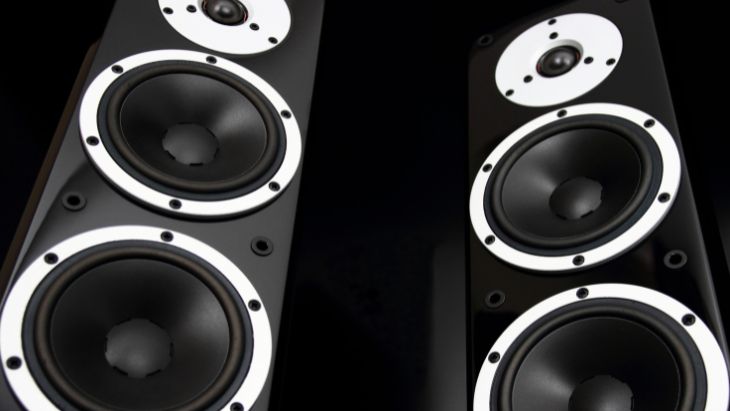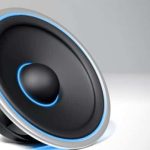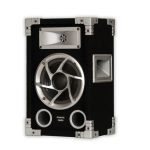There’re many types of speakers available today. They’re all designed to reproduce sound from a sound device, be it an instrument or an audio player. When shopping for aftermarket speakers, you may come across terminologies such as 2-way, 3-way, and 4-way speakers. These terminologies define the number of speaker drivers that come in one speaker monitor or basket. Each speaker driver usually has a specific frequency range that it covers. If speaker drivers of different frequency ranges are built into one speaker monitor or basket, then the speaker delivers an overall wider frequency range.
It’ll help to learn the difference between 2-way, 3-way, and 4-way speakers especially when you want to shop for new speakers for your car, boat, or home audio. The kind of driver setup you’ll choose will determine the kind of frequency range you’ll enjoy. Read on to learn more about the differences between two-way, three-way, and four-way speakers.
What is a 2 way Speaker

2 way speakers are the most common speaker types. They’re commonly used in cars and boats where budget and space are tight. Just like the name suggests, two-way speakers come with two different drivers that are built into one speaker basket or monitor. This speaker system usually comes with a woofer driver and a tweeter driver. The woofer is usually larger than the tweeter driver. Thus, you can easily differentiate between the two drivers.
Basically, the woofer cone reproduces low frequency. Low frequency ranges from an average of 20 Hz to 3 kHz. Thus, a woofer reproduces sound from devices such as bass drums and bass guitars. On the other hand, the tweeter driver reproduces high-frequency audio in the range of around 30 Hz to 160 Hz. As such, the tweeter makes highs from music and instruments audible.
As you can see, a two-way speaker reproduces both lows and highs. A well-designed two-way speaker should have a crossover to divide the frequency it receives into low and high frequencies. It then sends lows to the woofer cone and highs to the tweeter.
Actually, this speaker system is the most affordable option since it only comes with two drivers. It’s ideal for a coaxial audio setup since you won’t have to buy separate drivers. However, it lacks midrange. Thus, it’s only ideal for anyone who wants bass and highs.
In case you’re setting up your own 2-way speakers, no matter the number of woofers and tweeters you’ll add to one monitor, the end result will be a 2-way speaker system. Thus, so long as the system is comprised of woofers and tweeters only, regardless of their number, what you get is a two-way driver speaker.
What is a 3 way, Speaker?
Three-way speakers are also known as tri-axial speakers. Just like the name suggests, 3-way speakers come with three different types of drivers. These drivers include a tweeter driver, a woofer cone, and a midrange driver. They’re all built into one speaker basket or monitor. Basically, the woofer driver is the largest of the three drivers. The midrange driver is the second-largest whereas the tweeter is the smallest driver.
The woofer reproduces lows whereas the tweeter reproduces highs, just like in a 2-way speaker. The additional midrange driver, in this case, reproduces midrange sound. A midrange driver usually reproduces frequencies within the range of 160 Hz and 502 kHz. Thus, you get a wider frequency range in a 3-way speaker than in a 2-way speaker. Also, the sound is more detailed since all frequency ranges are covered.
However, this speaker system is more expensive than a 2-way speaker. It may also take up a larger space than a 2-way speaker. Thus, if you can spend more money for more detailed sound, then a 3-way speaker would be a great deal.
What is a 4 way, Speaker?
A 4-way speaker system is yet another speaker option to choose from. These speakers are also referred to as quad-axial speakers. Again, just like the name suggests, a four-way speaker comes with four different kinds of sound drivers built into one speaker basket or monitor. Basically, a 4-way speaker comes with a woofer cone, a midrange cone, a tweeter, and a super tweeter.
The difference between a 4-way and a 3-way speaker is that a 4-way speaker comes with an extra tweeter known as a super tweeter. While the normal tweeter reproduces normal highs, the extra tweeter, often known as a super tweeter, reproduces the upper-most limit of high frequencies.
However, this speaker type is less common than two and three-way speakers. Four-way speakers are more expensive than two and three-way speakers. They may also take more space than two and three-way speakers since they have more drivers packed into one basket or monitor. Nevertheless, they deliver the most detailed sound.
2 Way Vs 3 Way Speakers
Basically, you’ll get a wider frequency range in a 3-way speaker than in a 2-way speaker. This is because a three-way speaker covers more frequencies than a two-way speaker. Also, the sound in a three-way speaker is more detailed if you compare it with that of a two-way speaker due to the wider frequency range coverage in a three-way speaker.
However, three-way speaker systems are often more expensive than two-way speakers. Three-way speakers also take larger speaker housing space compared to the housing space of two-way speakers. Thus, if you can spend more money for more detailed sound, then a three-way speaker would be a better deal than a two-way speaker.
3 Way Vs 4 Way Speakers
The difference between a 4-way and a 3-way speaker is that a 4-way speaker comes with an extra tweeter known as a super tweeter. While the normal tweeter reproduces normal highs, the extra tweeter, often known as a super tweeter, reproduces the upper-most limit of high frequencies.
However, four-way speakers are less common compared to three-way speakers. Also, four-way speakers are more expensive than three-way speakers. Most four-way speakers demand more housing space than three-way speakers since they have more drivers packed into one basket or monitor. Nevertheless, four-way speakers deliver the most detailed sound.
Conclusion
While there’re some key differences between 2-way, 3-way, and 4-way speakers, the best option should be based on your personal preferences. Now that you know their differences, it can be easier to make a choice between the three options. If your budget is extremely tight and you have limited space to install a speaker, then go for a 2-way speaker. If you can spend some more and you want more detailed sound, then you can go for a 3-way speaker. In case you want to go extra and spend more for the most detailed sound and you don’t have limitations in terms of space to install a speaker, then a 4-way speaker would be right for you. Thus, your ultimate choice should be based on your preferences.
Michael Evanchuk is a San Francisco-based sound engineer with 20 years’ experience installing, troubleshooting, and repairing commercial, automotive, and household sound equipment. Evanchuk owns an auto stereo center, where he offers highly competitive car audio installation and repair services. He has written dozens of articles on different sound engineering topics, all of which have been published in leading journals, blogs, and websites.





